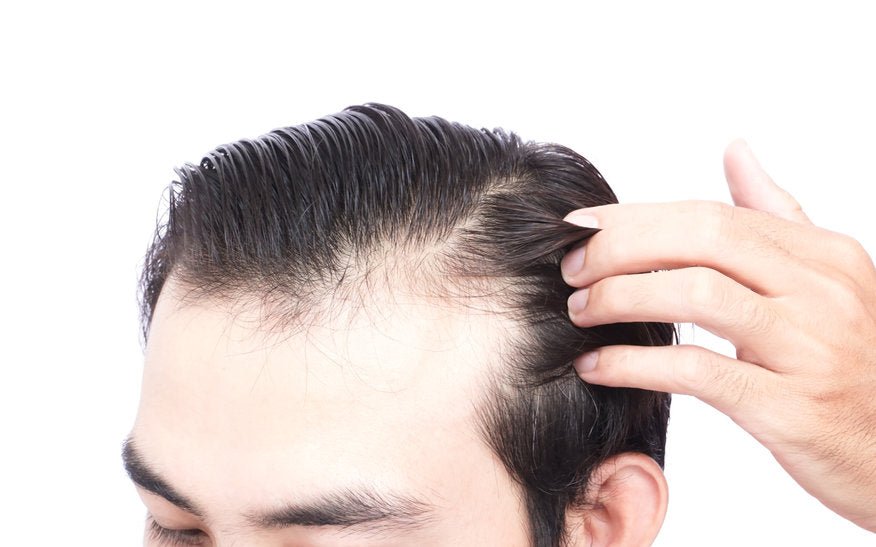
Genetics and Heredity of receding hairlines
Our fathers give us so much. They pass down their wisdom, their life advice, their recipes, and even their dance moves, some of which we’d rather not take. We inherit all the good and some of the not so good, including genetic hair loss. But how much do we really know about hair loss and where it comes from?
The Cause
According to the American Hair Loss Association (AHLA), eighty five percent of men have thinning hair by the age of 50. Twenty five percent of those men start losing their hair before they turn 21. There are many different conditions that may contribute to hair loss, but Androgenetic alopecia is the common.
Androgenetic alopecia, which is estimated to affects 50 million men and 30 million women in the United States alone, is commonly known as male/female pattern baldness.
Pattern baldness usually starts with the hairline receding away from the forehead and temples, commonly leaving the top of the head or the whole scalp completely bald. This can begin anytime after puberty and progress at variable rates.
Who is to blame for hairloss?
There are numerous misconceptions about the link between heredity and hair loss. Hair loss in males is thought to be handed down from the mother's side of the family, while hair loss in women is thought to be passed down from the father's side. The fact is that hair loss genes and hair loss itself are passed down from both sides of the family, and can even skip generations, affecting offspring randomly.
"Hair loss genes are passed from both sides of the family, not just your mother or father," says Adam Mamelak, MD, a dermatologist in Austin, Texas "However, male-pattern or hereditary hair loss is more complicated than whether or not you possess the gene. "Genetics, hormone levels, and the normal aging process all have a role," Mamelak explains.
Researchers discovered 287 genetic variants linked to male pattern baldness in a 2017 study published in PLOS Genetics. Their extensive genetic study can determine the chance of male pattern baldness, but it isn't 100% accurate. Only 58 percent of the study's individuals who scored in the top 10% for hair loss genes had moderate-to-severe hair loss. The best way to predict hair loss is by checking for early indication, as well as noting whether any of your family members have male pattern baldness.
What to do about your hair loss?
Hairloss treatment is a multi-billion dollar industry and there are many options, each with its own pros and cons. The most effective hair loss treatments tend to also be the most invasive. Costly medications and painful procedures such as laser treatments and implants have the best success rate. Whereas behavioral recommendations like diet, exercise, and stress management may slow the rate of hair loss, but are ultimately unlikely to help you overcome a genetic predisposition to baldness. The limitations of these treatments have led many men to embrace their hair loss. This is why HeadBlade has developed the award winning Moto razor to make sure men have the right products to maintain a healthy bald head.
This Father’s Day, let your dad know that you’re grateful for everything he has passed on to you, from your music taste to your good looks. The HeadBlade Fathers Day Kit is the perfect Father’s Day gift for those ready to embrace their hair loss. The kit includes the Moto S4 stainless steel razor with refill blades, as well as three products that will improve your entire shaving experience. HeadSlick is a mentholated shave cream that lubricates the head as you shave. ClearHead developed to protect your dome all summer long.

